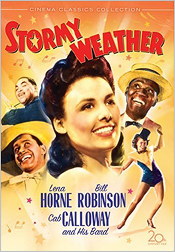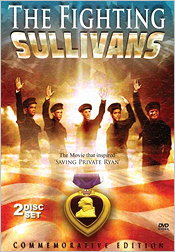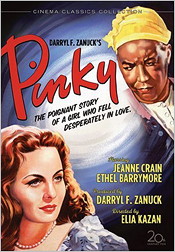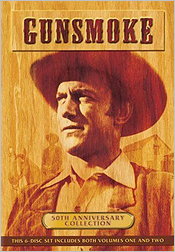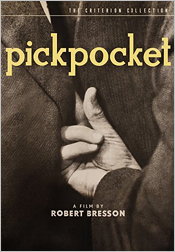 |
Site created 12/15/97.

page created: 1/25/06
 Barrie Maxwell - Main Page |
| A
New Year, Some Reviews, and the Latest Announcements Welcome to 2006 and another year of classic coverage here at The Bits. Looking back at the riches trotted out by the studies in 2005, the new year is going to be hard pressed to match the one just completed. Just consider the best classic releases of the past year, listed alphabetically: Single-title Releases Ben-Hur (4-disc) Easter Parade: Special Edition Heaven Can Wait King Kong: Special Edition Laura Nightmare Alley Seven Men from Now:Special Collector's Edition To Kill a Mockingbird: Legacy Series Twentieth Century The Wizard of Oz (3-disc) Multi-title Box Sets Astaire & Rogers Collection Classic Comedies Collection Ealing Comedies Collection Errol Flynn Collection Gangsters Collection Garbo Signature Collection Gary Cooper Collection Harold Lloyd Collection Thin Man Collection Val Lewton Collection An awful lot of titles on people's wish lists were crossed out with these various releases, not to mention numerous other releases that all had merits that made them worthy contenders for the above lists also. Of course, there are still many gaping holes as far as classic enthusiasts are concerned and hope springs eternal that a new year will address those deficiencies - Clark Gable, James Cagney, early Spencer Tracy, more Bette Davis and Joan Crawford, more Errol Flynn and Humphrey Bogart, John Garfield, Edward G. Robinson, Jean Harlow, Ann Sheridan, early Paramount, pre-code films, Fox musicals, more B series films - to list but a few. Some studios such as Warner Bros. and Fox seem to have the bit firmly between their teeth, with an impressive roster of releases already revealed for early 2006. Universal with some nice announcements this past week is coming on strong, while Sony and Paramount have been slow to get out of the gate. One hopes, in Paramount's case, that the early-year doldrums merely reflects attention to its recent reacquisition of the Republic catalog and that that will pay rich dividends later this year with more John Wayne releases and some of Republic's many fine serials and B western titles. The smaller companies like Criterion, Image, Kino, Milestone, and VCI will all have classic treasures mixed in among their offerings as they have in the past. Increasingly though, I would direct classic enthusiasts to some of the small dealers who specialize in early B films made available on DVD-R. In most cases, that's the only way you're going to see such films in your favorite format. Grapevine Video, ReelClassicDVD, and Sinister Cinema are but a few of such outfits whose catalogs are worth perusing, in terms of obscure titles combined with quite decent DVD presentations. It being 2006, high definition will increasingly be an issue. Already, we've had several classic titles mentioned as being available in HD later this year. I don't think, however, we need fear HD eroding releases of classic titles at least in the short term, for standard definition DVD will continue to be the studios' bread and butter for home video releases over the next few years. Reviews For 2006's first batch of reviews, we go from 1920 to 2004 covering eleven releases from seven different studios. The titles, a mixture of late 2005/early 2006 releases, are: Why Change Your Wife/Miss Lulu Bett, Stormy Weather, The Fighting Sullivans, Pinky, Gunsmoke: 50th Anniversary, Volumes One and Two, The Five Pennies, Pickpocket, The Wild Bunch, FDR, and Foyle's War: Set 3. |
| The
film has fine production values and offers the opportunity to see a
wealth of current fashions from 1920, many of which simply seem
incredibly garish to me. The amount of material in some of the
swimming outfits seems more likely to cause drowning than anything
else. One of the film's attractions is its inter-titles, which are
playfully written and offer as much entertainment value as anything
else in the film. Cecil B. De Mille's older brother was William deMille (who used the traditional spelling of the family name). William deMille's films were generally more realistic than the often overblown epics that Cecil became known for, although few of his nearly 50 silent films have apparently survived. Miss Lulu Bett is one of the better ones, detailing the progress of a young woman (Lois Wilson) working as the family drudge in the home of her sister and brother-in-law. An accidental marriage (that has to be seen to be believed) begins to open her eyes to the world and leads eventually if tortuously to a better life. Lois Wilson is really good as Lulu, and the film sets up the situation and leads us through the initial consequences very well. Unfortunately, it squanders the good will built up in its first hour with a rather hurried 10-minute resolution that is completely predictable and also doesn't really let the viewer fully savour the turning of the tables on Lulu's selfish relatives (effectively portrayed by Theodore Roberts and Mabel Van Buren). Given the films' ages, their presentation on DVD is quite decent. The images are reasonably sharp and the use of colour tinting is effectively handled. There are plenty of scratches and speckles as one might expect, and there is also evidence of negative decomposition in Miss Lulu Bett. The music for both films, which generally complements the stories well, is provided by the Mont Alto Motion Picture Orchestra and is adequately rendered by the DVD. The disc's only supplement is a very good four-page booklet of production notes by film historian Robert Birchard. |
| More
than 20 musical numbers in total are presented in Stormy
Weather, including three songs sung by Lena Horne
(highlighted by the title tune), and performances from the likes of
Fats Waller (an energetic rendition of "Ain't Misbehavin'"),
Ada Brown, Cab Calloway ("Geechy Joe" and "The
Jumping Jive"), the Katherine Dunham Dance Troupe, and the
Nicholas Brothers. The latter's performance is worth the price of
admission alone, and is perhaps the duo's most inventive and
athletic tap dance routine put on film (which is saying something,
for those who are at all familiar with the Nicholas Brothers'
extraordinary work). Fox's full frame presentation is great. The image is sharp with minimal source defects and a modest amount of grain results in a nice film-like effect. Both stereo and mono audio tracks are provided and either are quite adequate although some hiss is in evidence. English and Spanish subtitles are provided. The disc case is nicely packaged in a cardboard slip jacket and includes several reproductions of lobby cards. Other supplements include a merely average audio commentary by Todd Boyd. He seems to concentrate more on the film's context than its actual content thus suggesting an apparent lack of familiarity with a number of the film's players. Trailers are included for Daddy Long Legs and Call Me Madam. Recommended. |
| The
Sullivan parents are nicely played by Thomas Mitchell and Selena
Royle. With the occurrence of the attack on Pearl Harbor, all five
brothers signed up together to join the navy and were eventually
assigned to the U.S.S. Juneau. All died in action when the Juneau
blew up in battle off Guadalcanal in November 1942. In the film,
these events are briskly handled with some well-edited but brief
action footage, the brothers' actual demise being treated with
considerable sensitivity. Anne Baxter and to a lesser extent Ward
Bond are included in the cast to provide some minor box office boost
- Baxter as the sweetheart and eventual wife of the youngest of the
brothers and Bond as a naval recruiting officer who also delivers
the news of the brothers' loss to their parents. The overall impact
is of an appealing slice of Americana. Originally released in 1944 as The Sullivans, but retitled within months as The Fighting Sullivans, the film was originally an independent production released by Twentieth Century-Fox. Ivy Films holds the copyright currently and it was under license from them that Roan’s earlier and VCI’s current DVD releases have appeared. VCI's presentation is full frame as originally shown and offers quite a decent image transfer. There are some soft sections, but for the most part the image is clear and nicely detailed. There are a few instances of awkward cuts and some speckles and scratches in evidence, but overall, one can watch the film without being distracted by the minor deficiencies. The mono sound is clear with only minor hiss in evidence at times. English sub-titles are also provided. Most of the supplements are found on the second disc. They include a tribute to the Sullivan Brothers (service records, family photos, letters), a featurette on the Grout Museum where material on the Sullivans highlights tributes to fighting men and women of Iowa throughout history, a tribute to the U.S.S. Juneau (Last Muster list, eyewitness accounts and memorials), and a section on the survivors of the Juneau's sinking including a 37-minute interview with the last living survivor, Frank Holmgren. Other supplements (found on the first disc) include the original theatrical trailer, an actor photo gallery, and actor biographies. Recommended. |
| Pinky
(Jeanne Crain) tells the tale of a young black woman of such light
complexion that she is able to pass as white. She graduates as a
nurse from a northern school and returns to her grandmother's home
in the south. The visit is intended as merely one of duty, as her
grandmother (Ethel Waters) had financed much of her education, but
Pinky finds herself forced to remain and nurse a dying elderly white
woman (Ethel Barrymore) who is a close friend of her grandmother.
Jeanne Crain's performances are usually pretty bland, but that works
to her character's advantage in Pinky.
Pinky often seems unable to decide what to do or what's right,
characteristics reinforced by the passive and emotionless air that
Crain's performance exudes. Her work is well contrasted with the
heartfelt efforts of Ethel Waters, and the ebullient nature of Ethel
Barrymore. All three women received Academy Award nominations for
their work (Crain as Best Actress, the other two as Best Supporting
Actress), but none won. Director Kazan maintained a tight grip on
the material and the final film is one that retains its vitality and
relevance even today. Fox's DVD presentation is one of its first three offerings in its new Cinema Classics Collection. The packaging is very attractive. The disc case comes enclosed in a cardboard slipcase that's nicely illustrated with original release artwork on the cover. Several reproductions of lobby cards are included inside. The full frame transfer looks quite nice. The image is reasonably sharp with decent shadow detail. A fair bit of grain is in evidence as are some scratches and speckles, although the latter are never intrusive. Both stereo and mono audio tracks are provided. There's little to choose between them and either do the job quite adequately. English and Spanish subtitles are also provided. Film historian Kenneth Geist delivers an interesting audio commentary and the original theatrical trailer is included. Recommended. |
| It
was initially considered as a television western vehicle for John
Wayne, but Wayne was too busy and successful in films at the time to
take on the lead role. He recommended good friend James Arness to
the producers as an alternative and then gave the new series a boost
by filming an introduction to its opening episode, Matt
Gets It. That show (first aired September 10th, 1955)
signaled something different in television western fare, as Gunsmoke's
protaganist actually gets gunned down, before recovering to manage
the expected resolution to the plot. In its initial half hour, the
show also established the relationships between Dillon and Miss
Kitty and amongst the other chief characters, Chester and Doc. A lot
happens in half an hour, and that was characteristic of the series
throughout its history, unlike so many other television westerns
that played out a simple morality tale with minimal added value. The
series retained its half-hour format (233 episodes) until the fall
of 1961 when it changed to a full hour for the rest of its run (400
episodes). Filming in colour began with the 1966-67 season. Fans of Gunsmoke will greet Paramount's 50th anniversary DVD release (in cooperation with CBS) with mixed emotions. It's great to have a quality presentation of the series, but when so many mediocre television series are getting full season releases, one wonders why a series of real quality isn't being accorded the same treatment. We can only hope that this is a mere testing of the waters and that full season releases will follow. In the meantime, we have two three-disc box sets that present a total of 29 episodes sampling all twenty seasons with the exception of seasons #17 and 20. The choices of episodes are good ones, and with the exception of a bizarre outing from 1960 entitled The Bobsy Twins, all are highly entertaining and illustrative of the series' writing and acting strengths. A wide variety of guest stars are featured including Chuck Connors, Angie Dickinson, Charles Bronson, George Kennedy, Burt Reynolds, William Shatner, Jon Voight, Dennis Hopper, Bette Davis, and Kurt Russell. It's particularly pleasing to have five episodes from the opening season (Matt Gets It, Hack Prine, The Killer, The Preacher, and The Guitar) as well as later gems like Doc's Reward (season 3), The Blacksmith (season 6), Chesterland (season 7), Ash (season 8), One Killer on Ice (season 10), The Jailer (season 12), and Quiet Day in Dodge (season 18). The presentation of the material is full frame as originally telecast, but the image quality is merely average compared to the generally crisp, bright nature of other contemporary CBS/Paramount television DVD releases such as I Love Lucy, Have Gun - Will Travel, and The Andy Griffith Show. The shows look clear enough, but are frequently a bit soft and characterized by scratches and speckles. There is little difference in quality between shows from the first or the 19th season. The mono sound is in decent shape, but there are no subtitles. Both three-disc sets have a fine package of supplements, with 11 of the episodes having audio commentaries (by Arness, Weaver, and a number of original episode guest stars) and all having brief introductions by James Arness (now 82). Other extras are appearances by Arness and Weaver on The Ed Sullivan Show, footage of Emmy Award wins by the series itself and by Dennis Weaver and Milburn Stone as best supporting actors, some Dennis Weaver home movies footage from the set, various Gunsmoke memories as originally presented on the Westerns channel, three gag reels, photo galleries, and appearances by Amanda Blake on the David Frost and Mike Douglas shows. Although this DVD release is not what Gunsmoke fans really want, it's well packaged and of such high entertainment value that it gets my recommendation, if only to encouragement the full season releases the series deserves. |
| Directed
with sensitivity by Melville Shavelson, the film follows the general
details of Nichols' life reasonably closely and turns the
cornetist's story into an interesting saga. I can't say how closely
Danny Kaye resembles Nichols or captures the cornetist's actual
personality, but the performance is an appealing one - a restrained
effort from Kaye on the whole. A number of Dixieland standards are
presented and are generally well mounted, particularly a couple of
numbers with Louis Armstrong including a fine duet of "When the
Saints Come Marching In". Barbara Bel Geddes appears as
Nichols' wife and the later sequences with their daughter (nicely
played by Susan Gordon as a youngster and Tuesday Weld as a
teenager) and her struggle with polio are quite effective in respect
to showing the iron lung and hot compress aspects of treating the
ailment, without resorting to cheap sentiment. Nichols' return to
music is handled in the typical Hollywood happy-ending style, but
the film has already built up too much good will to be greatly
compromised by that quibble. Nichols himself played the cornet parts
for Kaye in the film. Look for Bob Hope and Blanche Sweet in
uncredited cameos. Paramount presents the VistaVision film on DVD in a very nice 1.85:1 anamorphic transfer. The colour is very vibrant and accurate, and the image is in general sharp and nicely detailed. Only a few speckles are in evidence. In addition to the original mono track, Paramount has provided a Dolby Digital 5.1 track that enhances the music numbers quite well. The front sound stage is noticeably opened up and there are some nice ambient sound effects in evidence. English subtitles are provided, but there are no supplementary features. Recommended. |
| It's
something he's obsessed by to the exclusion of all else, to the
extent that his relationships with other human beings are all
greatly flawed. He cannot even bear to visit his dying mother,
preferring to leave a present for her with a neighbour even after
taking the time to travel to her home. Even when that neighbour, a
young woman, shows interest in him, he seems unable to respond in
kind, offering at first only minimal appreciation. It is, however,
the eventual relationship with her that in the end offers the film's
only remotely possible avenue of redemption. The film is directed by Robert Bresson and ranks behind his work on the later Au Hasard Balthazar (1966) or his final film L'Argent (1983). Bresson aspires to engineer performances from his cast with all the life sucked out of them, apparently with the intent of allowing his films to interact directly with the viewer. The only interaction that results here is one that threatens ennui, however. After all, who wants to spend the better part of 90 minutes watching a cut-rate pickpocket get but marginally better at his chosen profession, never mind make little progress at all on the level of interpersonal relationships. The film's ending is completely predictable and the whole experience only goes to prove that watching paint dry really does offer little reward. I'll admit that there is a modest fascination in Bresson's efforts to cancel out his actors, but that soon wears thin and ultimately strikes me as diminishing the medium rather than enriching it. Criterion certainly tries to make a silk purse out of a sow's ear. The black and white full frame presentation is very nice with a generally crisp image and minimal source material defects although some fluctuation in image intensity is apparent at times. The French mono audio is clear and precise, and English subtitles are available. The supplements range from an audio commentary by film scholar James Quandt who seems convinced he's in the presence of a masterpiece to insert notes by Gary Indiana that are equally effusive. In between we also get an introduction by director Paul Schrader, a 2003 documentary featuring actors from the film, a 1960 interview with Bresson, a Q&A on Pickpocket following a 2000 screening of the film, footage of sleight-of-hand artist and Pickpocket consultant Kassagi, and the original theatrical trailer. Generally, all the supplements are more interesting than the film itself. If you're in fact a fan of this film, the Criterion edition is the way to go, but I'm not convinced enough of the film's merit to give the package a recommendation. I know I'm in the minority here, but so be it. |
On to Part Two
Barrie Maxwell - Main Page
 |
| Site
designed for 1024 x 768 resolution, using 16M colors and .gif 89a
animation. © 1997-2015 The Digital Bits, Inc., All Rights Reserved. billhunt@thedigitalbits.com |

